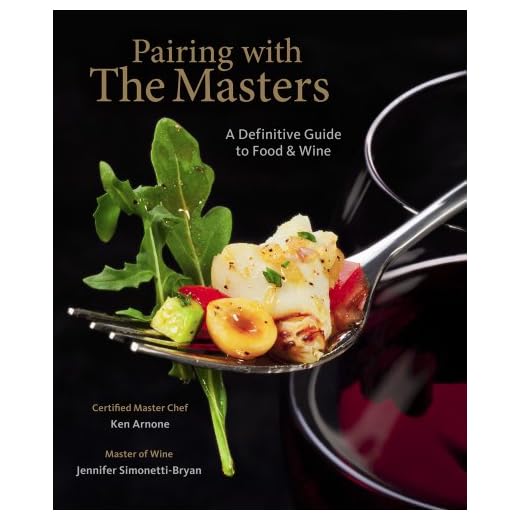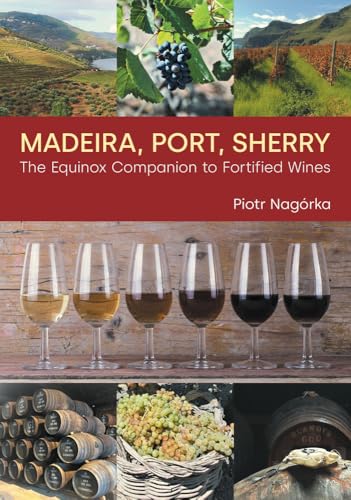



For enthusiasts, the spectrum of tastes in fermented grapes can reach into the hundreds. Depending on the region, grape variety, and production techniques, each bottle offers a unique experience. While red, white, and rosé are the primary categories, these can be further dissected into numerous subcategories that reflect the intricacies of flavor.
To truly appreciate the nuances, consider exploring varietals such as Cabernet Sauvignon, Chardonnay, and Pinot Noir. Each grape possesses distinct characteristics influenced by factors like terroir and vinification methods. For instance, a well-crafted Cabernet Sauvignon may exhibit notes of blackcurrant, while a finely aged Chardonnay might reveal hints of butter and oak.
In addition to varietals, exploring blends can introduce a whole new layer. Some of the most beloved combinations, like Bordeaux or Rhône blends, showcase how different grapes can harmonize beautifully. Don’t overlook sparkling options, which can range from dry to sweet, offering a refreshing twist on traditional offerings.
Ultimately, the exploration of these liquid gems is about personal preference. I recommend attending tastings and visiting local vineyards, where you can engage directly with the winemakers. This hands-on approach will not only expand your palate but also deepen your understanding of the craft that goes into each bottle.
Exploring the Spectrum of Varietals
To appreciate the incredible diversity in this beverage, focus on varietals and their characteristics. Each type offers unique profiles influenced by factors such as climate, terroir, and winemaking techniques.
Here’s a simplified guide to some prominent categories:
- Red Varietals:
- Cabernet Sauvignon: Bold, with notes of blackcurrant and oak.
- Pinot Noir: Lighter, showcasing cherry and earthy flavors.
- Syrah/Shiraz: Rich, often spicy, with dark fruit elements.
- White Varietals:
- Chardonnay: Versatile, ranging from buttery to crisp apple flavors.
- Sauvignon Blanc: Zesty, with citrus and green herb notes.
- Riesling: Aromatic, often sweet, with stone fruit and floral hints.
- Rosé Varietals:
- Grenache: Fruity and dry, with strawberry and watermelon tones.
- Sangiovese: Bright acidity, showcasing cherry and herbal notes.
Beyond these prominent choices, consider lesser-known options that can surprise and delight:
- Tempranillo: A Spanish grape, often presenting plum and leather.
- Malbec: Hailing from Argentina, with dark fruit and chocolate nuances.
- Vermentino: An Italian variety, refreshing with citrus and minerality.
Engaging with different styles enhances your experience and understanding of this remarkable drink. Seek out tastings or educational sessions to deepen your knowledge and palate. The joy lies in exploration, so embrace the journey of discovery!
Understanding the Basic Types of Wine
First, it’s essential to recognize the primary categories available. Red, white, rosé, sparkling, and dessert are the main classifications. Each type offers a unique profile that can complement various dishes and occasions.
Red options stem from dark-skinned grapes. They typically present robust tannins and a spectrum of flavors ranging from berry to spice, making them suitable for hearty meals. Pair a Cabernet Sauvignon with grilled meats for an excellent match.
White selections are crafted from green or yellowish grapes. They often exhibit crisp acidity, with flavors from citrus to stone fruits. A Chardonnay can be delightful with seafood or poultry, enhancing the dining experience.
Rosé combines elements from both red and white varieties, offering a refreshing profile. Its light body and fruity notes make it a versatile choice, perfect for summer gatherings or light fare.
Sparkling beverages, such as Champagne, are carbonated, providing a festive touch. These can be enjoyed on their own or paired with salty snacks, enhancing the overall flavor dynamics.
Dessert styles are typically sweeter and can be made from various grapes. They often serve as a delightful end to meals, complementing pastries or cheese plates beautifully.
Understanding these categories will enhance your enjoyment and ability to choose the right option for any occasion. Exploring different types is an excellent way to expand your palate and discover new favorites.
Exploring Red Wine Varieties
For those seeking bold and complex profiles, red options offer an array of choices that can elevate any meal or occasion. Notable types include Cabernet Sauvignon, which is renowned for its rich tannins and dark fruit flavors, making it a classic pairing with red meats.
Another compelling choice is Pinot Noir, celebrated for its lighter body and nuanced characteristics, featuring cherry and earthy notes. This variety excels with poultry and dishes showcasing mushrooms.
Other Noteworthy Selections
Merlot stands out for its soft, approachable taste, often highlighted by plummy and chocolate undertones. It pairs seamlessly with a wide range of foods, including pasta and grilled vegetables.
Zinfandel, with its jammy fruit profile and spicy finish, is perfect for barbecued dishes, while Syrah offers a robust experience with its peppery and dark berry notes, complementing hearty stews and grilled meats beautifully.
Exploring Regional Specialties
Regional differences add another layer of excitement. For instance, Malbec from Argentina is known for its bold, dark fruit flavors and velvety texture, making it a favorite with grilled meats. Alternatively, Sangiovese from Italy showcases bright acidity and cherry flavors, excellent with tomato-based sauces.
As you explore these varieties, consider how they interact with different foods, enhancing the overall dining experience. For practical tips on related topics, check out this guide on can you put washing powder straight in the drum an experts guide.
Delving into White Wine Options
For those seeking refreshing options, consider Sauvignon Blanc. This varietal often presents crisp acidity and vibrant citrus notes, making it an excellent choice for seafood dishes or salads. Look for expressions from Marlborough, New Zealand, known for their intense tropical fruit character.
Chardonnay offers a diverse range, from unoaked styles showcasing bright apple and pear flavors to rich, oaked versions with buttery texture and hints of vanilla. For a delightful pairing, try an oaked Chardonnay with creamy chicken dishes or lobster.
Another intriguing pick is Riesling, which can vary from dry to sweet. A dry Riesling pairs beautifully with spicy Asian cuisine, while a sweeter style complements desserts or fruit-based dishes, enhancing their natural sweetness.
Don’t overlook Pinot Grigio, particularly those from Italy. This light-bodied option features notes of green apple and honeysuckle, making it perfect for warm weather and light appetizers.
Consider exploring Grüner Veltliner for something unique. This Austrian varietal offers peppery spice and herbal undertones, pairing well with vegetable dishes or Mediterranean cuisine.
Lastly, Viognier presents an aromatic profile, characterized by floral and stone fruit notes. This wine works well alongside rich dishes, such as duck or creamy pasta, enhancing the overall dining experience.
Discovering Rosé and Sparkling Wines
Rosé offers a delightful balance of red and white characteristics, making it versatile for various occasions. Look for Côtes de Provence or Spanish Garnacha for a refreshing experience. A dry rosé pairs beautifully with seafood, salads, and Mediterranean dishes, while a sweeter option complements desserts or spicy cuisine.
For bubbly enthusiasts, options like Champagne, Prosecco, and Cava showcase different styles. Champagne is renowned for its complexity, with notes of brioche and citrus. Prosecco, on the other hand, is fruit-forward and light, ideal for casual celebrations. Cava provides a fantastic value, often exhibiting similar qualities to Champagne at a lower price point.
| Type | Origin | Tasting Notes | Food Pairing |
|---|---|---|---|
| Rosé | Côtes de Provence | Strawberry, citrus, floral | Seafood, salads |
| Champagne | France | Brioche, citrus, almond | Shellfish, fried foods |
| Prosecco | Italy | Green apple, honeysuckle | Brunch dishes, light appetizers |
| Cava | Spain | Peach, citrus, toasted bread | Tapas, cheeses |
Experiment with these options to find what resonates with your palate. Pairing choices can enhance your dining experience, creating memorable moments with each sip. Don’t hesitate to explore lesser-known regions and producers for hidden gems that offer exceptional quality at attractive prices.
Regional Influences on Wine Flavors
Understanding the geographic origin of a varietal is crucial for appreciating its unique attributes. Each region imparts distinct characteristics due to factors such as climate, soil composition, and local winemaking traditions.
Climate and Terroir
Climate plays a fundamental role in shaping the profile of grapes. For example, cooler climates typically produce wines with higher acidity and more pronounced fruit notes, while warmer areas yield riper, fuller-bodied options. Terroir, encompassing the interplay of soil, geography, and climate, further refines the taste. Regions like Bordeaux are known for their clay-limestone soils, which contribute to the minerality found in their Cabernet Sauvignon and Merlot.
Winemaking Techniques
Local customs and traditions significantly influence the crafting processes. For instance, in Italy, the use of indigenous yeasts can impart a sense of place in wines like Barolo and Chianti. In contrast, New World regions, such as California, often employ modern techniques like temperature-controlled fermentation, resulting in fruit-forward profiles. Each method adds layers of complexity and nuance, reflecting the essence of the locale.
| Region | Key Characteristics | Notable Varietals |
|---|---|---|
| Bordeaux | Clay-limestone soils, balanced acidity, aging potential | Cabernet Sauvignon, Merlot |
| Burgundy | Cool climate, terroir-driven, elegant profile | Pinot Noir, Chardonnay |
| Napa Valley | Warm climate, ripe fruit, bold flavors | Cabernet Sauvignon, Zinfandel |
| Tuscany | Sun-drenched hills, rustic charm, herbal notes | Sangiovese, Super Tuscans |
Exploring these regional distinctions enhances one’s appreciation and understanding of what each unique offering brings to the table, creating a richer tasting experience.
Influence of Terroir on Wine Taste
To truly appreciate the depth of character in each bottle, one must consider the impact of terroir. This unique combination of climate, soil, topography, and local traditions shapes the essence of every varietal. For instance, grapes grown in volcanic soil often carry a mineral quality, bringing a distinct edge to the profile.
The climate plays a pivotal role as well. Regions with warm days and cool nights, like Napa Valley, enhance the ripeness of the fruit while preserving acidity, resulting in balanced profiles. In contrast, cooler climates, such as Burgundy, yield grapes with higher acidity and more complex aromas, often leading to elegant and nuanced expressions.
Elevation also matters; higher altitudes can lead to slower ripening, allowing for more developed flavors. For example, wines from mountainous areas often exhibit bright acidity and concentrated flavors due to the cooler temperatures at night.
Local practices in viticulture and winemaking further contribute to distinctive traits. Traditional methods may involve specific fermentation techniques or aging processes that reflect the region’s heritage, adding layers of complexity. Exploring these elements can reveal why a particular region’s bottling stands apart from others.
In my experience, tasting wines from diverse terroirs not only enhances understanding but also fosters a deeper appreciation for the artistry involved. Each sip tells a story of its origin, making it an exciting exploration for any enthusiast.
Pairing Wine Flavors with Food
To elevate your dining experience, consider matching the characteristics of your preferred beverage with specific dishes. Here are some guidelines that can enhance your meals.
Red Options
- Cabernet Sauvignon: Pairs excellently with grilled meats, especially steak. The bold tannins complement the charred flavors beautifully.
- Pinot Noir: A wonderful match for roasted chicken or duck. Its acidity cuts through rich sauces, enhancing the dish’s profile.
- Syrah/Shiraz: Ideal for spicy dishes like barbecue or Moroccan tagines. The fruitiness balances the heat, creating a harmonious blend.
White Selections
- Chardonnay: Works well with creamy pasta dishes. The buttery notes in the beverage mirror the richness of the sauce.
- Sauvignon Blanc: Perfect with fresh seafood or salads. Its zesty acidity brightens up the flavors of herbs and citrus.
- Riesling: An excellent companion for spicy Asian cuisine. The sweetness of this variety tempers the heat, enhancing the overall experience.
Experimentation is key. Don’t hesitate to try unconventional pairings that resonate with your palate. Take note of how the interaction between the dish and the beverage can transform your meal into a memorable occasion.











